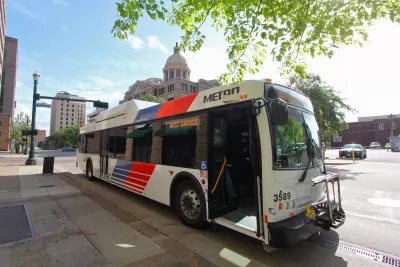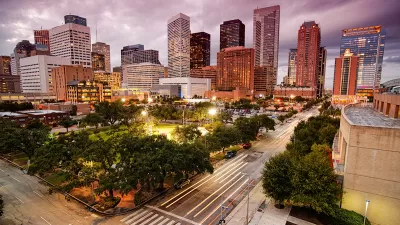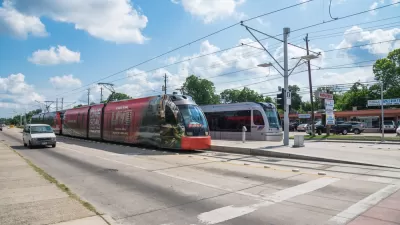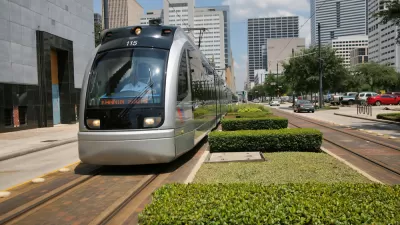The Moving Forward Plan seeks to improve transportation throughout the region, but funding and project priorities still need to be sorted out.

Dug Begley takes a closer look at the Metropolitan Transit Authority’s METRONext Moving Forward Plan that includes a series of bus, rail, and roadway projects. The plan outlines light rail extensions, proposed bus rapid transit routes, increased commuter and local bus service, and new high-occupancy vehicle lanes and park-and-ride facilities.
Begley says that projects are planned throughout Metro’s 1,200-square-mile service area to get more commuters using transit:
Inside the Sam Houston Tollway where buses travel most major streets and are more commonly used by residents, officials want to increase how often those buses come. Outside the beltway where more than 2 million of Harris County’s residents live, park and ride lots will be expanded and commuter buses will go to more places more often.
Critics, however, say that the plan does not do enough to provide transit service to growing job centers in the Houston area. They also point out that extending rail service to Hobby Airport should be less of a priority as these projects will be costly and will carry fewer riders than comparable BRT alternatives and other routes to more densely populated areas.
Funding for the $7.5 billion plan is still up in the air. About half of the money will come from federal sources, with the remainder coming mainly from sales tax revenue bonds. Metro has started conducting public meetings to get input and comments and expects to put the bond issue in front of voters in November.
FULL STORY: Metro plan’s mix of transit, services a nod to differing Houston-area demands

Planetizen Federal Action Tracker
A weekly monitor of how Trump’s orders and actions are impacting planners and planning in America.

Congressman Proposes Bill to Rename DC Metro “Trump Train”
The Make Autorail Great Again Act would withhold federal funding to the system until the Washington Metropolitan Area Transit Authority (WMATA), rebrands as the Washington Metropolitan Authority for Greater Access (WMAGA).

The Simple Legislative Tool Transforming Vacant Downtowns
In California, Michigan and Georgia, an easy win is bringing dollars — and delight — back to city centers.

The States Losing Rural Delivery Rooms at an Alarming Pace
In some states, as few as 9% of rural hospitals still deliver babies. As a result, rising pre-term births, no adequate pre-term care and "harrowing" close calls are a growing reality.

The Small South Asian Republic Going all in on EVs
Thanks to one simple policy change less than five years ago, 65% of new cars in this Himalayan country are now electric.

DC Backpedals on Bike Lane Protection, Swaps Barriers for Paint
Citing aesthetic concerns, the city is removing the concrete barriers and flexposts that once separated Arizona Avenue cyclists from motor vehicles.
Urban Design for Planners 1: Software Tools
This six-course series explores essential urban design concepts using open source software and equips planners with the tools they need to participate fully in the urban design process.
Planning for Universal Design
Learn the tools for implementing Universal Design in planning regulations.
Smith Gee Studio
City of Charlotte
City of Camden Redevelopment Agency
City of Astoria
Transportation Research & Education Center (TREC) at Portland State University
US High Speed Rail Association
City of Camden Redevelopment Agency
Municipality of Princeton (NJ)





























